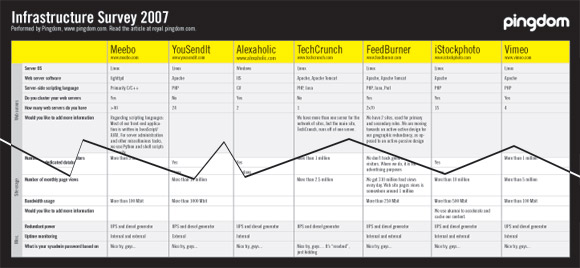Matt Asay wrote a commentary about Alfresco’s shift to free, giving out spots on the process that bring some interesting issues to light.
Alfresco answering the question whether it is feasible or not to be a pure open source player in the application space,is now taking its great chance to move from the corporate production model to an hybrid one. So while Alfresco will be soon symbioticly fostering a community around its product, it’s also clear that one size (business model) doesn’t fit all. Look at Funambol, taking advantage of a “pyramidal approach”, giving it away for free to end users and selling it to mobile operators. Could you imagine someone else layering users and customers that way?
 “Open Source street sign” by A. Svensson
“Open Source street sign” by A. Svensson
Meeting the needs of non commercial users might be difficult for an Open Source firm that has to consistently cope with short term profit goals. Alfresco’s trajectory was possible also because backed up by Venture Capitalists, allowing them to write Alfresco from scratch. It is worth to notice that others like SugarCRM despite raised big investments from VCs didn’t take the same direction, deciding to keep proprietary some extensions and plug-in. Then Vtiger eventually jumped into the market, showing that forcing users to become customers makes space for (more) disruptive competitors.
“Semi-open source” products don’t pay in the long run, but they might well be a mean to achieve short-to-medium profit goals indeed.
Matt Asay, telling about his first trip to Alfresco headquarters. wrote that the very reason to not go open at that stage was the fear:
Fear that unless forced, customers wouldn’t buy what they could otherwise get for free.
And so we worked through the quarter, gathering information on why enterprises bought from us. We had an excellent quarter, but we also got excellent feedback from our customers:
They would buy from us, anyway, even if we gave them the code.
Not all of them, mind you: most of Europe seemed to be running Alfresco (Community – then our only open source product) without paying us a centime. But we figured that these companies wouldn’t buy from us, anyway.
Alfresco’s services makes a lot of sense for their customers, they buy maintenance and support, and, I guess, they would buy more from them, if available. My guess is that European users don’t turn into customers because there are no local system integrators proficient in Alfresco yet.
The Application space might even have a smaller potential audience, but it is quite different from a commodity market where you need millions of users to get thousands of customers. Applications are designed for process/knowledge intensive companies, are often mission critical and need tuning and customization.
First movers have good chances, neverthless listening users, sharing roadmap decisions, start and foster communities while making the open source choice an effective one, may be not for all.
There are practical reasons for going 100% open source. I didn’t mention this above, but our engineering team perhaps hated our hybrid model most of all, because it forced them to maintain separate code branches [..]
As a group, we also didn’t like the fact that we were chummy with the commercial open source world, but didn’t play much of a role in the community open source world.
Start and Fostering communities, it’s really important. And it is not just matter to spread the value of your product to create customer pull. Leveraging communities might be difficult indeed, many Open Source firms fall in the corporate production idealtype category, missing the chance to shift to a more participative hybrid model. I see both MySQL and Sun working on a more symbiotic approach nowadays, and more will come. In fact FLOSSMetrics, an EC funded project, will soon show how, within known OS projects, a significant percentage of contributed code – sometimes more than 20% – come from developers outside the firm.
 “Let us assemble” by A. Svensson
“Let us assemble” by A. Svensson
Perhaps protection was important early on. This is the big issue that I don’t know how to resolve. We felt over time that we didn’t need the proprietary trappings. But it’s possible that this coverage was just enough to help us launch and get into “orbit.” I think for companies that take a more organic-growth approach, as Larry Augustin espouses (and with which I largely agree), early protection is less important than early community growth. And I want to believe that community growth is always more important.
But it’s an open question (no pun intended). One that I can’t really answer here because we weren’t 100% open initially, so I don’t know what our experience would have been, otherwise. I know that our revenues have exploded in parallel with the opening of our code, but I don’t think it’s fair to say that this was a consequence of our license changes. I think it was just a matter of having great code open and available. The real benefits of 100% open source code are mostly to come, I suspect.
Despite Alfresco didn’t choose to be 100% from the very first release, it’s clear now that for them open source is not just a cost effective marketing tool. Going GPL was just the first step to build a community based development around their product. Once again, best whishes.
Technorati Tags: Alfresco, Commercial Open Source, GPL, MPL, Sugar CRM, Vtiger
 O’Reilly by Duncan Davidson
O’Reilly by Duncan Davidson








 Persons or groups making easy for people to start using free and open source software are urged to apply for the
Persons or groups making easy for people to start using free and open source software are urged to apply for the
Savio Rodrigues 11:32 pm on March 9, 2007 Permalink
Cool – thanks for pointing this out Roberto!
I think the thing I really like about MySQL as a business is that they are up front about their commercial aspirations.
They do x,y and z and it just so happens that z=”make $$ using a dual license approach”. And since x=”build & maintain an active community”, it just feels like a good balance.